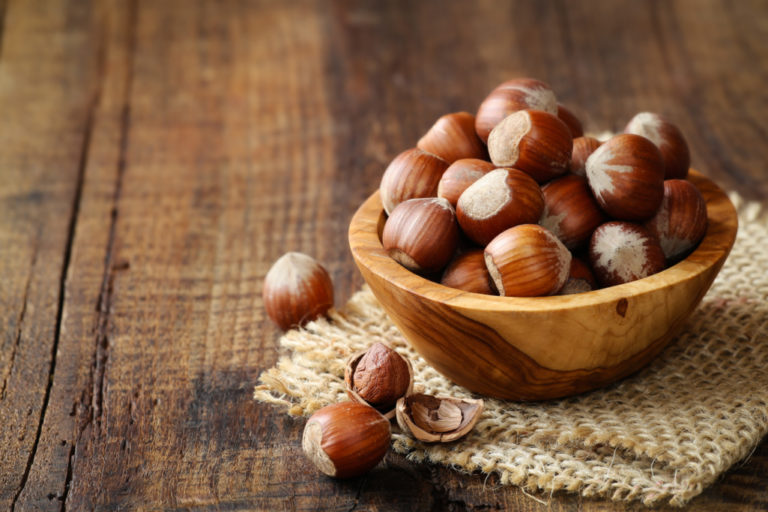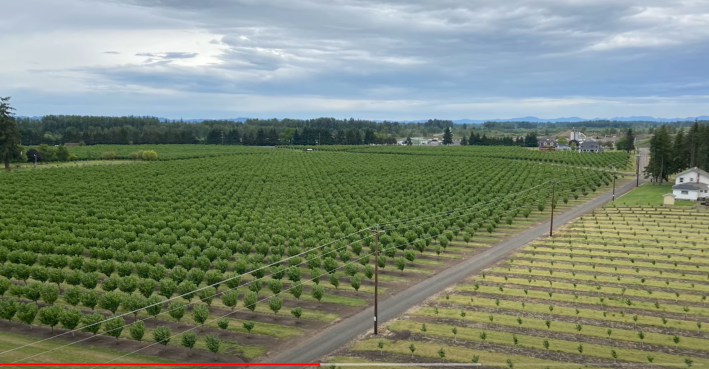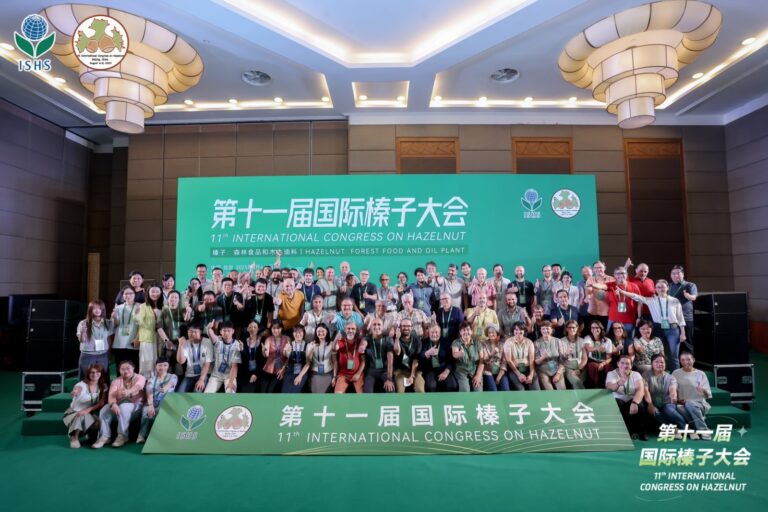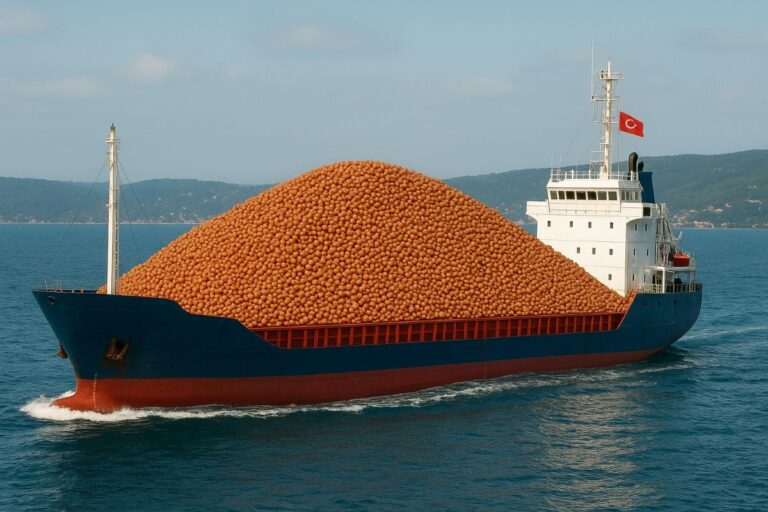Ferrero goes nuts for the Riverina with its $70 million hazelnut venture
JAMES WAGSTAFF, The Weekly Times
THE sundrenched plains of NSW’s Riverina are not the first things you think of when diving face-first into a tub of Nutella hazelnut spread or sneaking that last Ferrero Rocher treat from the cupboard. But they soon might be.
This vast expanse of marginal farming land, where Merino sheep ruled for more than a century before the introduction of irrigation and other technology dramatically altered the local agricultural landscape, is undergoing another significant transformation. And backers are nuts about the potential benefits it could bring to the region and the broader agriculture industry.
Agri Australis, the local arm of Italian food giant Ferrero – the world’s third-biggest chocolate and confectionary company and makers of well-known brands such as Nutella, Ferrero Rocher and Kinder Surprise – has staked a claim in the Riverina in an effort to shore up supply of hazelnuts to use in its products.
It is about halfway through planting one million trees in paddocks near Narrandera as part of a $70 million project that will create more than 100 full-time and part-time jobs. Once the trees reach maturity, it is estimated they will yield more than 5000 tonnes of in-shell hazelnuts a year – more than 30 times the amount currently produced in Australia.
Ferrero was established in 1946 in the Piedmont region of northwest Italy. Legend has it founder Pietro Ferrero, then a small-time confectionary maker, added hazelnuts to his recipes to save money on chocolate. It launched Nutella in 1964, which quickly became the world’s leading chocolate nut spread. About 365,000 tonnes of Nutella is now produced each year, accounting for about a quarter of the world’s annual hazelnut production of about 835,000 tonnes.
Ferrero, whose global headquarters is now in Luxembourg, Germany, turned over about $14.5 billion last year. The company has 78 subsidiaries and 22 manufacturing plants worldwide and distributes products to more than 160 countries with Asia, the Middle East, the US, Canada, Mexico and Australia the major markets.

While its traditional hazelnut planting activities are centered on Italy, China, Germany, Poland, India and Brazil, Ferrero launched a division in 2013 to develop new regions for tree production.
“The key elements driving the decision to invest in increasing the production of hazelnut around the world are the growth in sales driven by our products, together with the attention for the quality of raw materials,” the company says.
Ferrero set its sights on the southern hemisphere – South America, South Africa and Australia – where it could see “the possibility of exploiting the counter-seasonality effect, harvesting in the opposite season to the northern (hemisphere) and having the possibility of fresh hazelnuts year round”.
Agri Australis general manager Claudio Cavallini says potential to capitalise on the growth of Australia’s emerging hazelnut market also attracted Ferrero down under. Australia produces about 150 tonnes of in-shell hazelnuts a year but imports more than 2000 tonnes of cracked product (equivalent to about 4500 tonnes of in-shell nut), according to peak body the Hazelnut Growers of Australia.
“We saw the market was developing, we could see opportunity,” says Cavallini, who has served in a number of financial-related roles with Ferrero in Europe over the past 20 years. “The southern hemisphere can give opportunity. If you move the growing of hazelnuts into the southern hemisphere you can have a consistency in product … and fresh product.”
In 2011, having scoured NSW, Victoria and Tasmania looking for suitable properties – good water availability and soil type was the main criteria – Ferrero bought adjacent farms, the 1788ha Dellapool and 877ha Arrambee, on the banks of the Murrumbidgee River at Sandigo, east of Narrandera.
About 90 per cent of Dellapool – formerly owned by large-scale potato farmers and listed for sale in 2009 at more than $20 million (or about $1200 a hectare) – was set up for irrigated and dryland cropping, including 660ha of flood irrigation and 610ha under centre pivots. Arrambee had essentially been farmed as a dryland operation with about 100ha of flood irrigation and bore-water entitlement.

Cavallini says there is still plenty to do before hazelnut production can get underway, not the least of which is importing more than 200,000 hazelnut trees from Ferrero’s nurseries in Chile.
NSW Department of Primary Industries, Australian Quarantine and Inspection Service and Biosecurity Australia staff visited the Chilean nurseries before allowing the importation of the first 80,000 hazelnut trees in August 2011. Under strict biosecurity rules, nursery stock had to be treated for pest contamination and cleared of any soil material.
On arrival in Australia, the plants were placed in quarantine at the Yanco Agricultural Institute, a 45-minute drive from the farms, where they were joined by a second shipment of 130,000 trees the following year.
Meanwhile, man and machine were flat out on the farm with earthworks to improve drainage and water supply, constructing an above-ground water storage dam, installing surface drip irrigation, replacing pumping systems and pump sheds and building a new packing shed.
After clearing quarantine, the first imported plants were released to Agri Australis in late 2012. Planting began in April 2014. Cavallini says about 415,000 of the planned one million trees have been planted so far – “more or less equal to 830 hectares” of the 2000-hectare plantation. “We need another two years to finish the planting,” he says. The trees are in rows five metres apart with four metres between each tree. They mature at a height of 4-5 metres over 7-9 years.
“Our estimation is that we could see the first crop, or the first fruit, after four years (2018),” Cavallini says. “We can expect full production of hazelnut trees from year eight (2022). So we’ve now got six years until they’re in full production.”
When purchased, Dellapool had a river water allocation of 3233 megalitres and 2405 megalitres of groundwater licences. Cavallini says since taking over, Agri Australis has bought additional water on the open market. “In Australia it costs quite a lot,” he says.
A new storage dam, in the centre of the property, is serviced by a supply channel from the Murrumbidgee River. The dam has a surface area of 19.5 hectares and can store 490 megalitres when full. An estimated 6.9 megalitres of water will be used to water a hectare of trees. Agri Australis is working with the University of NSW and the University of Sydney to better gauge water usage.

Cavallini says while many areas of the project are still to be nutted out, the company expects harvest to occur in March-April. “We only have an estimate based on experience we have from our other farms across the world – we are in the northern hemisphere in Europe, we are in the southern hemisphere in Chile – and all the conditions are different,” he says.
“We are estimating more or less that the farm will generate something like 5000 tonnes from 2000ha. But this is only our best estimate at this stage.”
Agri Australis is hoping Dellapool will also act as a demonstration farm of sorts “in order to show the potential for the development of the hazelnut cultivation for farmers and potential investors”. The company also hopes to develop relationships with local farmers in an attempt to boost hazelnut output to 10,000 tonnes a year.
“We need to show local growers there will be an opportunity there to grow the industry,” Cavallini says. “As a demonstration farm we are focusing our efforts to collect data and share knowledge.”
In its project development application, Agri Australis says the hazelnuts will be harvested by high-pressure air blowing the trees, with the nuts falling into the middle of the rows, where they will be vacuumed up, placed in field bins and transported to the main shed. There they will be sorted in a water bath before being placed in small silos for drying.
They will then be packed into bags and shipping containers for transport. It is envisaged the farm will employ 50 full-time workers and 50 casuals in a range of positions, including farm management, supervision and office staff.
While the initial processing, or “cracking”, will take place overseas, it is envisaged that “in the medium term, dependent on critical mass”, the Narrandera hazelnuts will be made into products such as Nutella at Ferrero’s manufacturing plant at Lithgow, at the foot of the NSW Blue Mountains. Ferrero has produced Nutella using mostly imported hazelnuts at Lithgow, which employs more than 300 people, for more than 30 years.
Hazelnut Growers of Australia president Darren Baguley says Ferrero’s investment is “the best thing that has happened to the hazelnut industry in years”. He says as a vertically integrated company, it will operate in “effectively a parallel market” to the remainder of the Australian hazelnut industry and there will unlikely be any financial impact “or anything like that” on current growers.
“What has been fantastic is just the awareness among government and other parts of the horticulture industry and the general public that has been engendered by Ferrero. A couple of ag ministers, who I won’t name, didn’t even know Australia had a hazelnut industry until press releases started flying around about Ferrero.
“Now hazels are a bit of a flavour of the month in some quarters of horticulture. People get quite excited about it.”
Baguley runs a hazelnut orchard at Rylstone in central NSW – “we got a mugful of nuts this year because all our trees are only a few years old” – and says hazelnuts are grown in every state or territory bar Queensland and the Northern Territory.
In Victoria, the bulk of plantings are in the Ovens Valley while in NSW production is focused on the Central Tablelands region of Bathurst, Orange, Rylstone and Mudgee. Orchards can be found “all over” Tasmania, with South Australian production centred on the Adelaide Hills and in Western Australia around Manjimup, south of Perth.
Baguley sees potential for production in some parts of Queensland. “In theory, we could grow hazels in every state except the Northern Territory,” he says.
Despite this, he says Australia’s hazelnut industry is still “relatively small scale” with “even people who are regarded as large growers” small “by other industry standards”. There are about 150 growers nationally.
“One of the things with the hazelnut industry is that early on it was promoted as a thing for hobby farmers,” Baguley says.
“The idea was that you stick in a hectare of hazelnuts and that will give you a bit of income.
“There are still quite a lot of those growers around and some of them are very good growers (but) at the other end you’ve got people that have got 5000-6000 trees.”
Baguley says 200 hectares of hazelnut trees in Australia last year produced 150 tonnes of hazelnuts with a farmgate value of $1.2 million. He expects the industry to grow to 300 tonnes, with a farmgate value of $2.1 million, by 2020 and 1000 tonnes worth $7 million by 2025. These forecasts exclude any Ferrero production.

Farmgate prices, Baguley says, differ according to “where you’re selling it and who you’re selling it to”. The base rate for hazelnuts harvested, sorted, dried and delivered to processors is $3.50/kg in Victoria and $4.50/kg in NSW. “(With) a basic value add, such as sort, dry and cracking, then the grower can get at least double that, more like $10/kg,” Baguley says. “There are also people who have put a lot of investment into building a brand – roasting, packaging – and that can go as high as $65/kg.” Baguley says restaurants, artisanal patisseries and chocolate makers are absorbing more and more of the Australian product due to its freshness.
He says Australian hazelnuts account for less than 5 per cent of national consumption, with most imported from Turkey and “often well over 12 months old by the time they’re available for sale here”.
“People really like fresh hazelnuts,” he says. “Most people think of nuts as very long lasting but the reality is that most nuts are no longer at their best after six months.
“I can guarantee you that if you got a couple of Turkish nuts and a couple of Australian nuts and tasted them back to back, you’d wonder if they were the same nut. The difference is just so big.”
Baguley says most established hazelnut growers sold out of product within four or five months after harvest. “Some growers even sell their crops while it is still on the trees and they deliver progressively throughout the year,” he says.
Baguley says while he welcomes Ferrero’s addition to Australia’s hazelnut farming landscape, he doesn’t necessarily like to see a business of its size operating in the domestic commodity market. “I don’t think it is a good thing when you have one really huge operator and then a whole bunch of smaller ones,” he says. “It is better if the industry is more evenly distributed. I’d love to see half a dozen growers around that 35-50,000 tree mark. If we had that, we really would start to go some places.”

TURKISH DELIGHT
Australia barely registers as a blip on the world hazelnut production radar. And don’t expect that to change anytime soon.
According to the industry’s peak lobby group, the Hazelnut Growers of Australia, Australia produces just 150 tonnes – or 0.01 per cent – of the world’s 835,000-tonne annual output of the nut.
The biggest global player, Turkey, has an annual harvest of more than 660,000 tonnes, followed by Italy (85,000 tonnes), the US (30,000 tonnes), Azerbaijan (29,000 tonnes), Georgia (24,000 tonnes) and China (23,000 tonnes). Other major producers include Iran (21,000 tonnes), Spain (14,000 tonnes), France (8000 tonnes) and Poland (4000 tonnes).
Hazelnut Growers of Australia president Darren Baguley says, like many northern hemisphere-originated plants, hazelnut trees came to Australia with British settlers “possibly as early as the 1840s”.
He says the modern industry has roots dating back to the 1970s when “you had a few people growing them and while they were doing their best they didn’t really know what they were doing” before, in the early 2000s, government “sat up and took notice”.
The NSW, Victorian and Tasmanian state agriculture departments teamed up with the likes of Charles Sturt University and the University of Tasmania, and a number of passionate growers from the NSW Central Tablelands and southern Tasmania, to “work out what cultivars grow well and where, and tried to work out why,” Baguley says.
“We’ve seen a steady increase in interest to the industry (since) but the most important thing is actually the size of those entrants,” he says.
The $70 million investment at Narrandera by global confectionary manufacturer Ferrero is by far the biggest made in the local industry to date. But Baguley says even without the Ferrero project, nut plantings were on a steady rise. The value of the Australian hazelnut industry is forecast to grow from its current $1.2 million to $2.1 million by 2020 and $7 million by 2025.
But he warns against any talk of a “nut boom” that has transformed the almond, walnut and pistachio industries in recent years, where increased plantings have been driven by a surge in global demand from health-conscious consumers. This is because hazelnuts have more calories than most other nuts and are not destined for the health market.
“Hazelnuts aren’t really playing much of a role in it, unfortunately,” Baguley says. “Consumption has been relatively steady for a long time.”
Copyright: The Weekly Times






